HOW TO: ENABLE and RUN Microsoft Hyper-V in a VMware vSphere Virtual Machine
EE Fellow, MVE, Expert of the Year 2021,2017-11, Scribe 2016-2012, Author of the Year 2018-6,2013-2012 VMware vExpert Pro, vExpert 2022-2011
Published:
Browse All Articles > HOW TO: ENABLE and RUN Microsoft Hyper-V in a VMware vSphere Virtual Machine
In my previous Experts Exchange Articles, most have featured Basic and Intermediate VMware and Virtualisation Topics.
If you would like to read my Basic VMware articles, they are listed at the end of this article for your convenience.
VMware vSphere has the special ability to nest hypervisors, e.g. Host a Hypervisor as a virtual machine. But it is not enabled by default; if you try to add the Hyper-V role to a Microsoft Windows Server, you will receive the following error message:-
![2014-12-10-12-39-23-Greenshot.jpg]()
This is correct, because this virtual server FS01, is being hosted by a VMware vSphere (ESXi) 5.5 Server.
In this article, I’m going to take time out from writing a Basic VMware Article, and show you HOW TO: ENABLE and RUN Microsoft Hyper-V in a VMware vSphere Virtual Machine.
You will find that running Microsoft Hyper-V virtual machines in a virtual machine does degrade performance slightly compared to running Hyper-V on a bare metal server.
So why do we do it? A few reasons:
We've installed Microsoft Windows 2012 Server as shown in my Experts Exchange article HOW TO: Create your first Windows Virtual Machine on a VMware vSphere Hypervisor 5.1 (ESXi 5.1) Host Server.
Shut down the virtual machine, because we need to edit the virtual machine configuration settings (the VMX file).
![2014-12-10-13-17-13-Greenshot.jpg]()
At the VMware vSphere (ESXi) inventory, Remove the Virtual Machine from the Inventory. To do this, Right Click the virtual machine, and select Remove from Inventory.
![2014-12-10-13-22-21.jpg]() The next few steps can be done in many different ways. Essentially, you need to edit the virtual machine VMX file on the VMware vSphere ESXi host server. I've listed some methods here:
The next few steps can be done in many different ways. Essentially, you need to edit the virtual machine VMX file on the VMware vSphere ESXi host server. I've listed some methods here:
I'm going to demonstrate Option 3 in this tutorial. It's quicker.
Download WinSCP from here - http://winscp.net/eng/index.php and start WinSCP. Enter the
and Click Login to login and connect to your VMware vSphere (ESXi) host.
![WinSCP.jpg]()
Select the virtual machine machine datastore and folder. In this tutorial, the virtual machine is stored on datastore /vmfs/volumes/nfs_datastore8_dcs_san2a
![WinSCP1.jpg]()
Right Click the vmx file in the right hand pane. In this tutorial the file is called fs01.vmx and click Edit:
![2014-12-10-14-29-02-FS01---WinSCP.jpg]()
Notepad will launch, add the following lines to the VMX file
![2014-12-10-14-41-08--vmfs-volumes-2868ea]()
Save the file, and exit WinSCP. Browse to the location of the virtual machine folder on the datastore, and register the VMX file with the Inventory.
Right Click the VMX File > Add to Inventory
![2014-12-10-14-45-00-vcenter.net.dcs.hull]()
TOP TIP: If the files icon appears like a "blank notepad" -- examples of this are the files beneath the FS01.vmx file -- the VMX file you have updated is not correct or corrupted. This could be something as simple as missing quotation marks!
Power-up and start the virtual machine.
![2014-12-10-14-56-01-FS01.jpg]()
Login to the server, and add the Hyper-V Role. Select Add roles and features
![2014-12-10-15-33-32-FS01.jpg]()
Click through the wizard, and select the Hyper-V role.
![2014-12-10-15-39-03.jpg]()
Click Add Features.
![2014-12-10-15-43-48-Greenshot.jpg]()
Follow by Next to continue (it's at this point usually the error message is displayed,
![2014-12-10-15-45-06-Greenshot.jpg]()
Continue with the wizard, and Click Install to complete the installation of Hyper-V. Tick the box to Restart the destination server automatically if required.
![2014-12-10-15-49-05-Greenshot.jpg]()
The installaton will start.
![2014-12-10-15-50-46-Greenshot.jpg]()
A Progress bar is displayed as installation progresses
![2014-12-10-15-51-22-Greenshot.jpg]()
A Progress bar is displayed as installation progresses.
![2014-12-10-15-51-40-Greenshot.jpg]()
The server will restart to add the Hyper-V role and features.
![2014-12-10-15-52-02-Greenshot.jpg]()
Click the Hyper-V Manager icon on the start menu.
![2014-12-09-16-26-12-Greenshot.jpg]()
The Hyper-V Manager will show the Inventory. You are now ready to create virtual machines.
![2014-12-10-15-55-41-Greenshot.jpg]()
Congratulations you have successfully ENABLED and RUN Microsoft Hyper-V in a VMware vSphere Virtual Machine.
Basic VMware Articles Series:
During this series of articles VMware released VMware vSphere 5.5 and VMware vSphere Hypervisor ESXi 5.5. These articles are also applicable to VMware vSphere Hypervisor ESXi 5.0 and 5.5. For consistency, I have used VMware vSphere Hypervisor ESXi 5.1 throughout this series.
****************************************************************************
Thank you for reading my article, please leave valuable feedback. If you liked my VMware article and would like to see more Articles from me, please click the Yes button near the: Was this article helpful? at the bottom of this article just below and to the right of this information. Thank You. Do not forget if you have a question about this article or another VMware, Virtualisation, Windows Server 2012 question, why not post a Question for me and the other Experts Exchange Experts in the VMware, Virtualisation, Windows 2008, Windows 2012 Zones. I look forward to hearing from you. - Andy :- twitter @einsteinagogo
****************************************************************************
If you would like to read my Basic VMware articles, they are listed at the end of this article for your convenience.
VMware vSphere has the special ability to nest hypervisors, e.g. Host a Hypervisor as a virtual machine. But it is not enabled by default; if you try to add the Hyper-V role to a Microsoft Windows Server, you will receive the following error message:-
Hyper-V cannot be installed: A hypervisor is already running.

This is correct, because this virtual server FS01, is being hosted by a VMware vSphere (ESXi) 5.5 Server.
In this article, I’m going to take time out from writing a Basic VMware Article, and show you HOW TO: ENABLE and RUN Microsoft Hyper-V in a VMware vSphere Virtual Machine.
You will find that running Microsoft Hyper-V virtual machines in a virtual machine does degrade performance slightly compared to running Hyper-V on a bare metal server.
So why do we do it? A few reasons:
- if you have no physical hardware and you only have a VMware vSphere estate and you need to test Microsoft Hyper-V for training or certification purposes.
- Software Development environment using VMware Horizon View with Windows 8.1 Pro and Microsoft Visual Studio 2012/2013, Hyper-V needs to be enabled in the virtual machines, to execute the Windows Phone Emulator. (We have deployed such an environment successfully in Production with no performance issues in using the Windows Phone Emulator).
We've installed Microsoft Windows 2012 Server as shown in my Experts Exchange article HOW TO: Create your first Windows Virtual Machine on a VMware vSphere Hypervisor 5.1 (ESXi 5.1) Host Server.
Shut down the virtual machine, because we need to edit the virtual machine configuration settings (the VMX file).

At the VMware vSphere (ESXi) inventory, Remove the Virtual Machine from the Inventory. To do this, Right Click the virtual machine, and select Remove from Inventory.
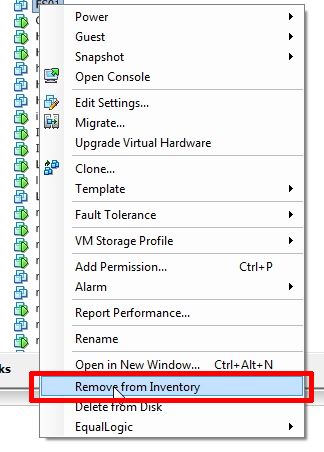 The next few steps can be done in many different ways. Essentially, you need to edit the virtual machine VMX file on the VMware vSphere ESXi host server. I've listed some methods here:
The next few steps can be done in many different ways. Essentially, you need to edit the virtual machine VMX file on the VMware vSphere ESXi host server. I've listed some methods here:
- Download the VMX file using the datastore browser, edit the VMX file in Windows notepad, and then upload the VMX file back to the host, overwriting the original.
- At the ESXi console, or remoely via SSH, edit the VMX file using vi.
- Use WinSCP, connect to the VMware vSphere (ESXi) server and edit the file directly.
I'm going to demonstrate Option 3 in this tutorial. It's quicker.
Download WinSCP from here - http://winscp.net/eng/inde
- hostname, IP Address or fully qualified domain name (fqdn)
- username
- password
and Click Login to login and connect to your VMware vSphere (ESXi) host.
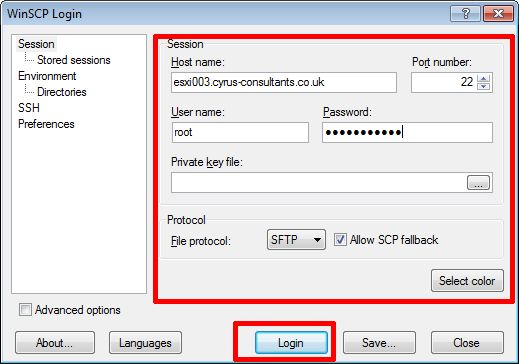
Select the virtual machine machine datastore and folder. In this tutorial, the virtual machine is stored on datastore /vmfs/volumes/nfs_datastor
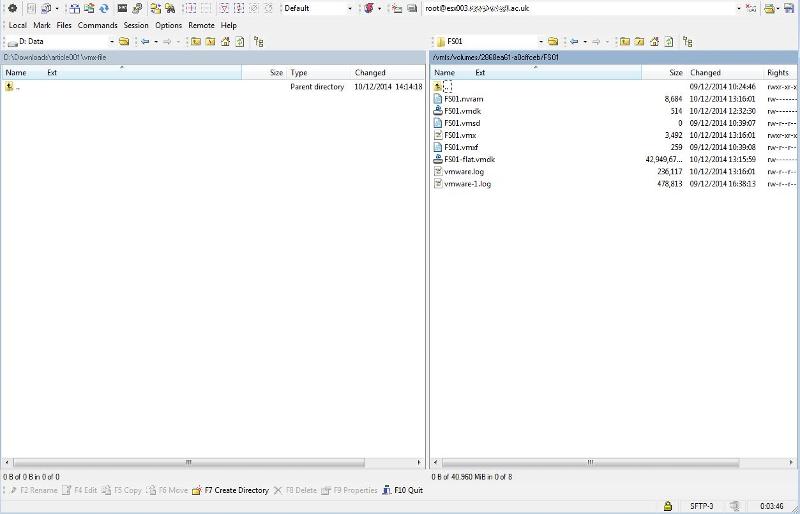
Right Click the vmx file in the right hand pane. In this tutorial the file is called fs01.vmx and click Edit:

Notepad will launch, add the following lines to the VMX file
vhv.enable = "TRUE"
hypervisor.cpuid.v0 = "FALSE"Save the file, and exit WinSCP. Browse to the location of the virtual machine folder on the datastore, and register the VMX file with the Inventory.
Right Click the VMX File > Add to Inventory
TOP TIP: If the files icon appears like a "blank notepad" -- examples of this are the files beneath the FS01.vmx file -- the VMX file you have updated is not correct or corrupted. This could be something as simple as missing quotation marks!
Power-up and start the virtual machine.
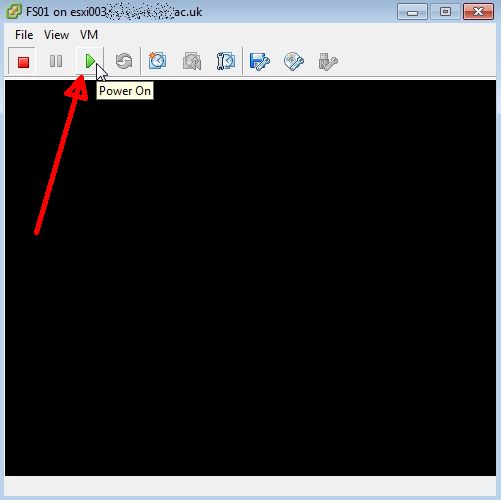
Login to the server, and add the Hyper-V Role. Select Add roles and features
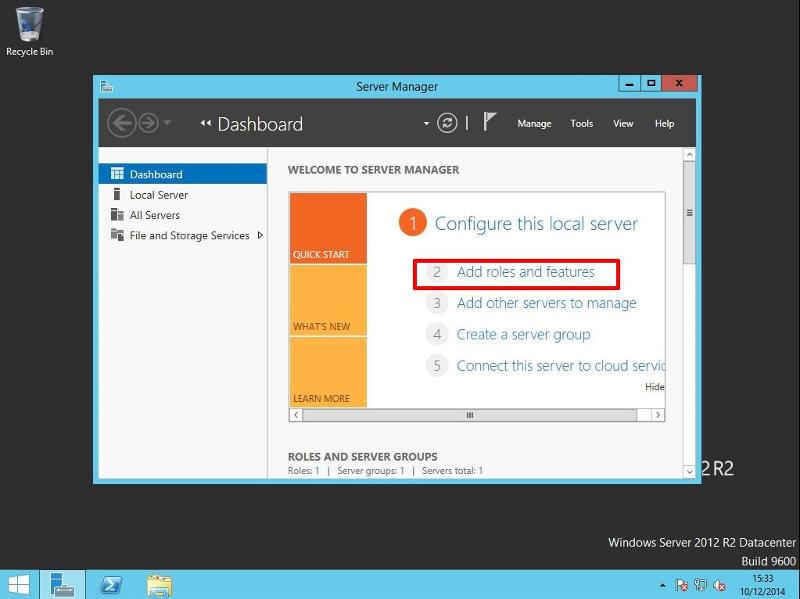
Click through the wizard, and select the Hyper-V role.

Click Add Features.

Follow by Next to continue (it's at this point usually the error message is displayed,
Hyper-V cannot be installed: A hypervisor is already running.
as shown at the start of this article).

Continue with the wizard, and Click Install to complete the installation of Hyper-V. Tick the box to Restart the destination server automatically if required.

The installaton will start.

A Progress bar is displayed as installation progresses

A Progress bar is displayed as installation progresses.

The server will restart to add the Hyper-V role and features.

Click the Hyper-V Manager icon on the start menu.
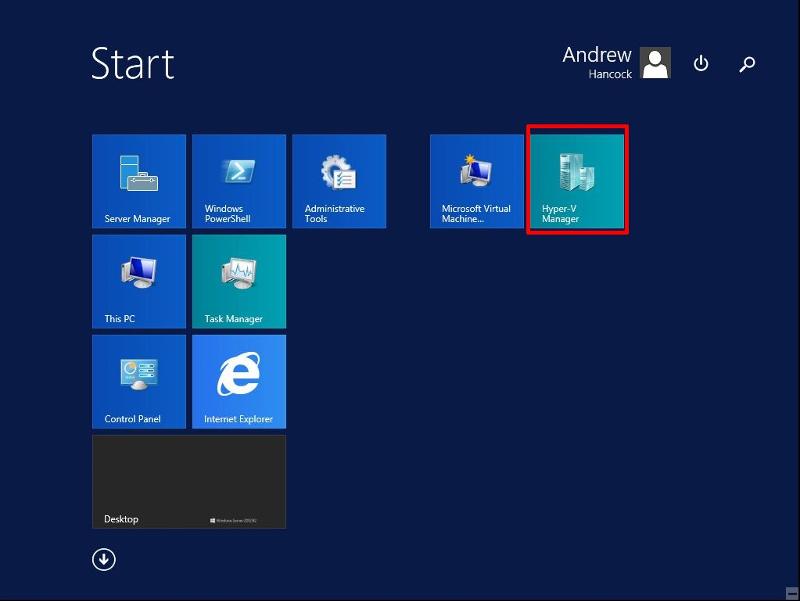
The Hyper-V Manager will show the Inventory. You are now ready to create virtual machines.

Congratulations you have successfully ENABLED and RUN Microsoft Hyper-V in a VMware vSphere Virtual Machine.
Basic VMware Articles Series:
During this series of articles VMware released VMware vSphere 5.5 and VMware vSphere Hypervisor ESXi 5.5. These articles are also applicable to VMware vSphere Hypervisor ESXi 5.0 and 5.5. For consistency, I have used VMware vSphere Hypervisor ESXi 5.1 throughout this series.
- Part 13: HOW TO: Configure basic networking on a VMware vSphere Hypervisor 5.1 (ESXi 5.1) Host Server
**************************
Thank you for reading my article, please leave valuable feedback. If you liked my VMware article and would like to see more Articles from me, please click the Yes button near the: Was this article helpful? at the bottom of this article just below and to the right of this information. Thank You. Do not forget if you have a question about this article or another VMware, Virtualisation, Windows Server 2012 question, why not post a Question for me and the other Experts Exchange Experts in the VMware, Virtualisation, Windows 2008, Windows 2012 Zones. I look forward to hearing from you. - Andy :- twitter @einsteinagogo
**************************
Have a question about something in this article? You can receive help directly from the article author. Sign up for a free trial to get started.


Comments (9)
Commented:
Is this a limitation, or are others able to get this to work?
Another really strange part of all of this is it must be able to route somewhere, because it hits my DHCP server...gets the correct addresses (DHCP registers it and assigns it the correct gateway, dns servers) but then I am unable to even ping the DHCP server. (No firewalls in the middle, and this is all within VMware's VSwitch and Hyper-V's Vstwitch).
Author
Commented:Commented:
I was able to get the nested v-switch working by setting the vswitch on the VMware side to allow "Promiscuous Mode". So I'm all set now. Thanks for the article!
On a side note, after I signed up submit a comment here I received a ton of spam mail and random people emailing me asking me to email them so I promptly unsubscribed.
Author
Commented:Commented:
"An Error occured while attempting to start the selected virtual machine(s).
Failed to start the virtual machine ' <<VM name>>' because one of the Hyper-V components is not running.
..........................
The Virtual Machine Management Service failed to start the virtual machine '<<VMName>>' because one of the Hyper-V components is not running ( Virtual Machine ID ........ )."
It would be useful to have the possibility to add images here so to not type so much.
Service 'vmms' is started. OS : Windows Server 2012 R2. 6GB of RAM. Intel XEON CPU.
Regards,
Victor
View More